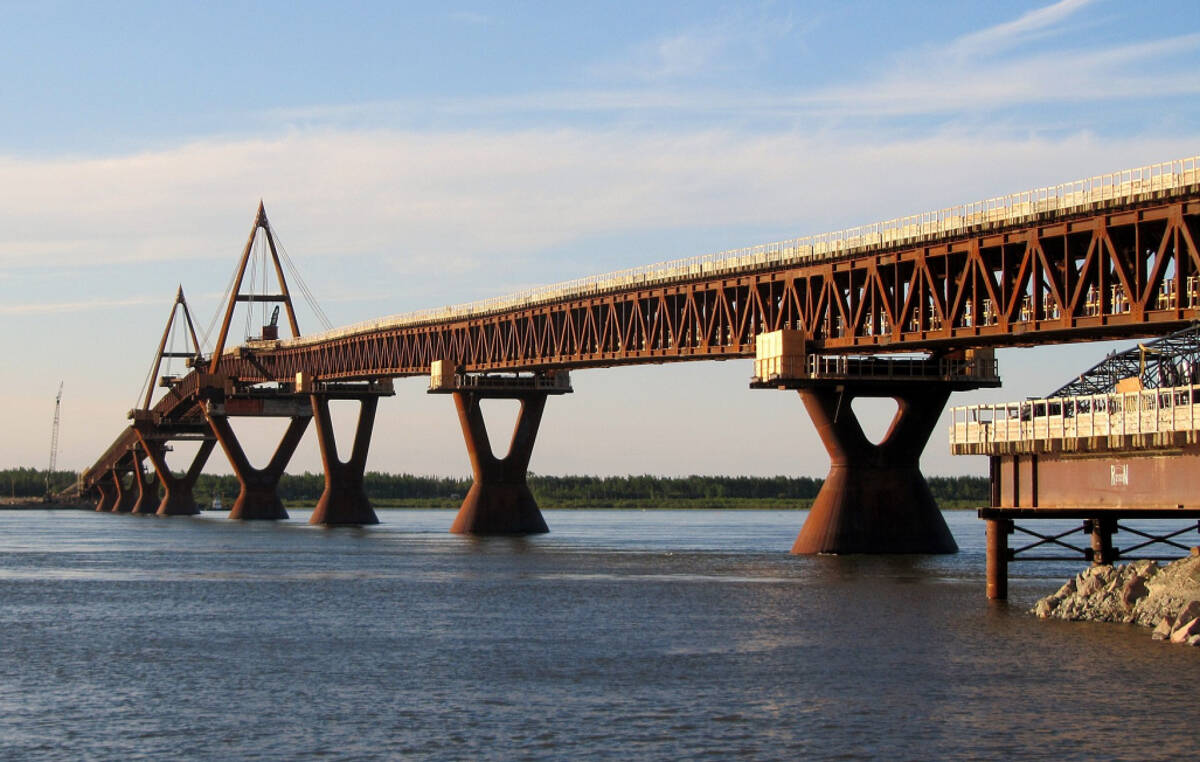The North is a place full of mystery and intrigue and some of the mysteries can be more intriguing than others. Let’s take a look at the Deh Cho Bridge for a moment, the $200 million bridge that spans the mighty Mackenzie River near Fort Providence.
When I first saw the Mackenzie River back in 1970, it didn’t look all that mighty. It was frozen over and I was driving a pickup truck full of bush gear up from Edmonton. Or, as many locals would say, down from Edmonton. I sat in the truck looking across the expanse of frozen water at the ice road. I hadn’t seen another vehicle on the road coming or going since Enterprise.
I was wondering ‘Is that really safe to drive across?’ Since there was no one else around, I thought to myself I might as well give it a try because surely if it wasn’t safe, someone would have stuck up a sign saying so. I also thought that is a mighty wide river to cross. So, you see, the Mackenzie River is a mighty river after all.
It used to be crossed by a ferry in the summer and an ice road in winter but around a decade ago they built the bridge, which is classified as a cable supported truss bridge. So, in early August when one of those cables broke or became undone, it created a bit of a stir.

Imagine being the first person to drive across and where a set of three cables comes down to the bridge, you only see two and the third one is hanging straight down, like a limp noodle of spaghetti, not bearing any of the bridges weight at all.
OK, that’s not good and you ask yourself, ‘I wonder: is the bridge still safe?’
By now, I am sure a team or two of engineers and bridge builders have surveyed the system, and the government assures us it is still safe because the bridge has some built-in redundancy. Still safe to use but to be sure, they have reduced traffic to one lane and the speed limit has been reduced to 30 km/h.
If a second cable came loose or broke, they might have a redundancy for that, I really don’t know, but at some point, you run out of redundancies and the bridge would be closed until it gets repaired. That is a scary thought because there is only that one crossing and the road supplies the North Slave region, including Yellowknife.
That is how we get our food, fuel, toilet paper and, more importantly, holiday decorations. Lots and lots of holiday decorations for Thanksgiving, Halloween, Christmas, and New Year’s. Once upon a time, people made most of their own decorations but apparently not anymore because the store shelves are overflowing with them, but that is another story.
Bridge experts have been checking it over because cables are not supposed to break or come undone. The GNWT might know what happened, but they haven’t told the public, so it is still a mystery to us and the repairs I am betting will be mighty expensive.
Human beings have been building bridges for thousands of years and have gotten quite good at it, but surprises still happen. A couple thousand years ago, the Roman Empire was sending armies out to conquer more territory. Funny things happened, though. Sometimes while an army was marching across a local bridge, the darned thing, despite its redundancies, would collapse, often drowning some troops who weren’t very good swimmers.
At first, they thought it might be the weight of the army on the bridge, but much heavier carts filled with wine kegs made it across alright. Eventually, some smart person who was also very observant figured it out. When the troops marched in unison their feet created vibrations which caused sine pressure waves to develop, and these tore it apart.
The wind can do the same thing on large suspension bridges. I suspect some day it will be discovered that a lot of the materials and designs just don’t work as well as expected in the North because of our cold winter climate. Time will tell, as we build more mega structures in the mysterious intriguing North.
